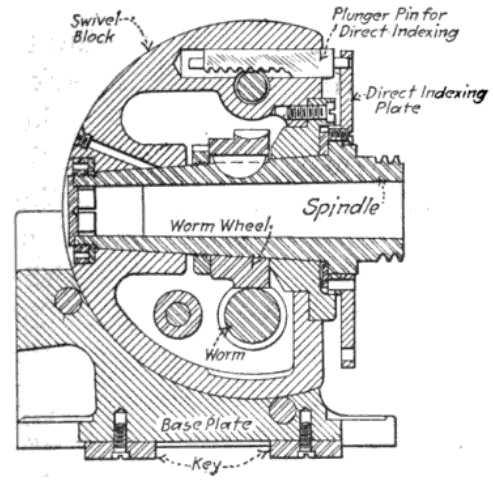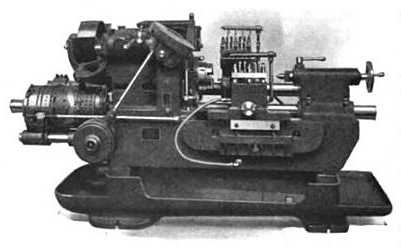|
Geneva Wheel
The Geneva drive or Maltese cross is a gear mechanism that translates a continuous rotation movement into intermittent rotary motion. The ''rotating drive'' wheel is usually equipped with a pin that reaches into a slot located in the other wheel (''driven wheel'' that advances it by one step at a time. The drive wheel also has an elevated circular blocking disc that "locks" the rotating driven wheel in position between steps. History The name, Geneva drive, is derived from the devices earliest application in mechanical watches, which were popularized in Geneva, being the classical origin of watchmaking industry. The mechanism is frequently used in mechanical watches, since it can be made small and is able to withstand substantial mechanical stress. The ''Geneva drive'' is also called a "Maltese cross mechanism" due to the visual resemblance when the rotating wheel has four spokes. In the most common arrangement of the Geneva drive, the client wheel has four slots and thus ... [...More Info...] [...Related Items...] OR: [Wikipedia] [Google] [Baidu] |
Geneva Mechanism 6spoke Animation
, neighboring_municipalities= Carouge, Chêne-Bougeries, Cologny, Lancy, Grand-Saconnex, Pregny-Chambésy, Vernier, Veyrier , website = https://www.geneve.ch/ Geneva ( ; french: Genève ) frp, Genèva ; german: link=no, Genf ; it, Ginevra ; rm, Genevra is the second-most populous city in Switzerland (after Zürich) and the most populous city of Romandy, the French-speaking part of Switzerland. Situated in the south west of the country, where the Rhône exits Lake Geneva, it is the capital of the Republic and Canton of Geneva. The city of Geneva () had a population 201,818 in 2019 (Jan. estimate) within its small municipal territory of , but the Canton of Geneva (the city and its closest Swiss suburbs and exurbs) had a population of 499,480 (Jan. 2019 estimate) over , and together with the suburbs and exurbs located in the canton of Vaud and in the French departments of Ain and Haute-Savoie the cross-border Geneva metropolitan area as officially defined by Eurostat, w ... [...More Info...] [...Related Items...] OR: [Wikipedia] [Google] [Baidu] |
Thomas Armat
Thomas J. Armat (October 25, 1866 – September 30, 1948) was an American mechanic and inventor, a pioneer of film, cinema best known through the co-invention of the Edison Vitascope. Biography Armat studied at the Mechanics Institute in Richmond, Virginia and then in 1894 at the Bliss Electrical School in Washington, D.C., where he met Charles Francis Jenkins. The two classmates teamed up to develop a movie projector using a new kind of intermittent motion mechanism, a "beater mechanism" similar to the one patented 1893 by Georges Demeny, Georges Demenÿ in France. It was one of the first projectors using what is known as the Latham loop (an extra loop of the film before the transport mechanism to reduce the tension on the film and avoid film breakage, developed independently at the same time by Woodville Latham and his sons). They made their first public projection using their invention, named ''Phantoscope'' after an earlier model designed by Jenkins alone, in September 1895 at ... [...More Info...] [...Related Items...] OR: [Wikipedia] [Google] [Baidu] |
Dawn (spacecraft)
''Dawn'' is a retired space probe that was launched by NASA in September 2007 with the mission of studying two of the three known protoplanets of the asteroid belt: 4 Vesta, Vesta and Ceres (dwarf planet), Ceres. In the fulfillment of that mission—the ninth in NASA's Discovery Program—''Dawn'' entered orbit around Vesta on July 16, 2011, and completed a 14-month survey mission before leaving for Ceres in late 2012. It entered orbit around Ceres on March 6, 2015. In 2017, NASA announced that the planned nine-year mission would be extended until the probe's hydrazine fuel supply was depleted. On November 1, 2018, NASA announced that ''Dawn'' had depleted its hydrazine, and the mission was ended. The spacecraft is currently in a derelict, but stable, orbit around Ceres. ''Dawn'' is the first spacecraft to orbit two extraterrestrial bodies, the first spacecraft to visit either Vesta or Ceres, and the first to orbit a dwarf planet. The ''Dawn'' mission was managed by NASA's Jet ... [...More Info...] [...Related Items...] OR: [Wikipedia] [Google] [Baidu] |
Iron Ring Clock
The McMaster Faculty of Engineering is a faculty located at McMaster University in Hamilton, Ontario. The faculty was established in 1958 and was the first engineering program to developed problem-based learning curriculum. It currently has seven departments in chemical engineering, civil engineering, computing and software, electrical and computer engineering, engineering physics, material science and engineering and mechanical engineering. The faculty offers bachelors, masters, and doctoral degrees. The faculty is home to 1 Canada Excellence Research Chair, 13 Canada Research Chairs, 4 Natural Sciences and Engineering Research Council chairs, and 14 Endowed Chairs. Programs The B.Eng. undergraduate programs are accredited through the Canadian Engineering Accreditation Board. All undergraduate students take a common first-year program, which outlines the fundamentals of engineering disciplines. At the end of the first year, students choose one of fourteen program disciplines ... [...More Info...] [...Related Items...] OR: [Wikipedia] [Google] [Baidu] |
Rotary Table
A rotary table is a precision work positioning device used in metalworking. It enables the operator to drill or cut work at exact intervals around a fixed (usually horizontal or vertical) axis. Some rotary tables allow the use of index plates for indexing operations, and some can also be fitted with dividing plates that enable regular work positioning at divisions for which indexing plates are not available. A rotary fixture used in this fashion is more appropriately called a dividing head (indexing head). Construction The table shown is a manually operated type. Powered tables under the control of CNC machines are now available, and provide a fourth axis to CNC milling machines. Rotary tables are made with a solid base, which has provision for clamping onto another table or fixture. The actual table is a precision-machined disc to which the work piece is clamped ( T slots are generally provided for this purpose). This disc can rotate freely, for indexing, or under the control ... [...More Info...] [...Related Items...] OR: [Wikipedia] [Google] [Baidu] |
Indexing Head
An indexing head, also known as a dividing head or spiral head, is a specialized tool that allows a workpiece to be circularly indexed; that is, easily and precisely rotated to preset angles or circular divisions. Indexing heads are usually used on the tables of milling machines, but may be used on many other machine tools including drill presses, grinders, and boring machines. Common jobs for a dividing head include machining the flutes of a milling cutter, cutting the teeth of a gear, milling curved slots, or drilling a bolt hole circle around the circumference of a part. The tool is similar to a rotary table except that it is designed to be tilted as well as rotated and often allows positive locking at finer gradations of rotation, including through differential indexing. Most adjustable designs allow the head to be tilted from 10° below horizontal to 90° vertical, at which point the head is parallel with the machine table. The workpiece is held in the indexing head in t ... [...More Info...] [...Related Items...] OR: [Wikipedia] [Google] [Baidu] |
Automatic Lathe
In metalworking and woodworking, an automatic lathe is a lathe with an automatically controlled cutting process. Automatic lathes were first developed in the 1870s and were mechanically controlled. From the advent of NC and CNC in the 1950s, the term automatic lathe has generally been used for only mechanically controlled lathes, although some manufacturers (e.g., DMG Mori and Tsugami) market Swiss-type CNC lathes as 'automatic'. CNC has not yet entirely displaced mechanically automated lathes, as although no longer in production, many mechanically automated lathes remain in service. General nomenclature The term "automatic lathe" is still often used in manufacturing in its earlier sense, referring to automated lathes of non-CNC types. The first automatic lathes were mechanically automated and controlled by cams or tracers and pantographs. Thus, before electronic automation via numerical control, the "automatic" in the term "automatic machine tool" always referred implicitl ... [...More Info...] [...Related Items...] OR: [Wikipedia] [Google] [Baidu] |




